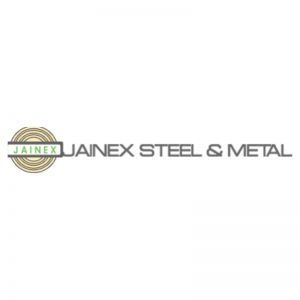What are the different types of SteelPosted by Jainex Steel and Metal on November 5th, 2019 There are more than 3,500 different steel types, which contain unique physical, chemical, and environmental properties, according to the World Steel Association. Essential steel is made up of iron and carbon, although it specifies the characteristics of each grade of steel by carbon as well as the amounts of impurities and additional alloyed components. Coal in stainless steel varies from 0.1% to 1.5%, with 0.1% to -0.25% of coal in the most widely used grades of steel. 1. Carbon Steel A carbon of iron, wood, and others, such as manganese, silicon, and copper, contains carbon steels. However, carbon is the primary carbon steel alloy, which represents around 90% of all steel productions. Carbon is the hardest element, so carbon steel products are very difficult too. Varying the carbon percentage produces different qualities of steel. The higher carbon content, however, often results in steel being more robust and fragile. Low carbon steel is the most common and cost-efficient form, also known as Wrought Iron. It is easy to work so that the lamp posts and fencing are perfect for decorative goods. Also known as Cast Iron, high carbon steel is the harder form, often used for knives, axles, punching, etc. Because of the chromium-free carbon stones, they corrode faster than nearly any other kind of stone. 2. Alloy Steels Alloy steels contain varying degrees of common alloy metals, which makes it suitable for particular applications. The alloy metals contain aluminum, manganese, nickel, titanium, silicon, copper, and chromium, which adds characteristics that are not the same as those found in standard carbon steels. For example, the use of chromium and nickel in stainless steel produces, whereas the use of aluminum leads to a more uniform look. On the other hand, manganese is known for the extra hardness and strength of steel. 3. Stainless Steel In particular, the main alloying component of stainless steels consists of 10-20 percent chromium and are valued for their high resistance to corrosion. Steels are more than 200 times more corrosion-resistant than mild steel, with more than 11 percent chromium. Based on their crystalline structure, these stalls can be classified into three groups: Non-magnetic non-heat treatable austenitic steels are typically containing 18% chromium, 8% nickel, and under 0,8% carbon. Austenitic Stainless Steel Coil makes up most of the global market for stainless steel, often used for the manufacturing of foodstuffs, cooking utensils, and piping. 4.Tool SteelsTooling stainless steels contain tungsten, molybdenum, cobalt, and vanadium in different amounts, making them ideal for cutting and boiling systems to increase heat resistance and durability. In terms of shapes and uses, steel products can also be categorized by long/tubulated products include bars and rods, railings, wires, piping angles, forms, and parts. These products are common in the automotive and building industries. Plates, sheets, bobbins, and strips include flat products. These materials are used mainly in automotive parts, equipment, packaging, shipbuilding, and building. Like it? Share it!More by this author |


